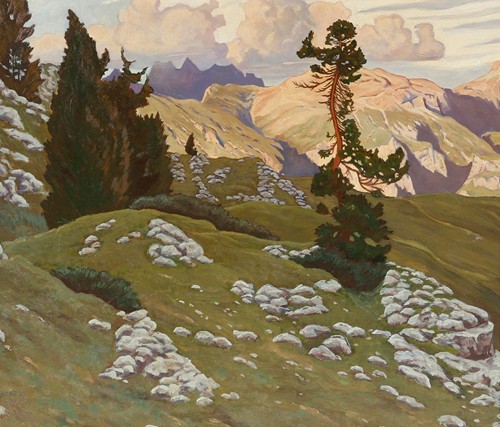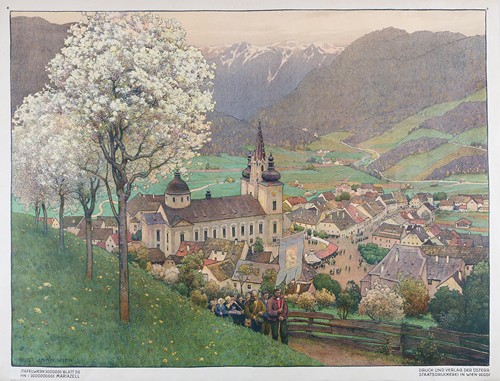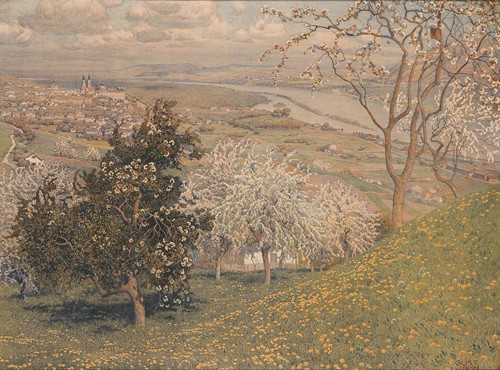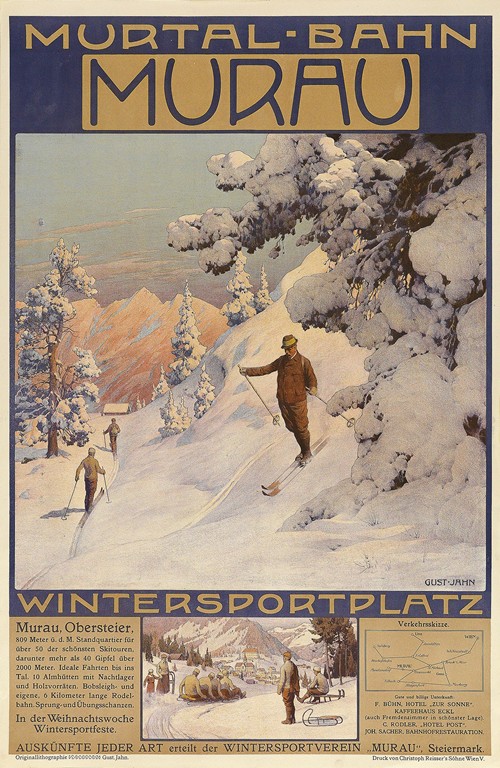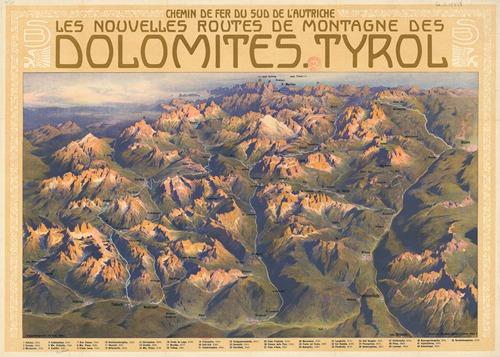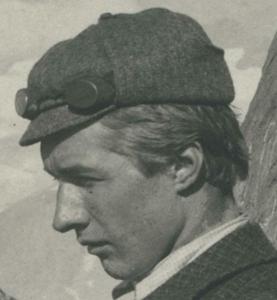

Gustav Jahn
Gustav Jahn was an Austrian landscape painter, poster artist and mountaineer.
He initially attended the private art school operated by Adolf Kaufmann, then enrolled at the Academy of Fine Arts. There, he studied with August Eisenmenger and Alois Delug and was awarded the Gundel-Prize for excellence in 1899. From 1900 to 1904, he once again had private lessons; this time with the genre painter, Franz Rumpler. He eventually combined his interests; specializing in landscapes and genre scenes from the high mountains.
His works were also distributed as prints and posters, with a series for the Imperial Royal Austrian State Railways being particularly well known. He also illustrated the catalogs of the Bergsporthaus owned by Mizzi Langer-Kauba [de], the first of its kind in Vienna.
His true passion was mountaineering; an interest which dated from a very early age. A study scholarship to Rome that he had received in 1904 was used more for climbing than painting. His favorite areas were the Rax and Schneeberg, Gesäuse, Dachstein and the Dolomites. He participated in the first ascent of the Große Bischofsmütze. From 1901, he was member of the prestigious Österreichischer Alpenklub.
He was also a committed skier and ski jumper; winning over twenty-eight awards during the coure of his career. These achievements led to his serving as an instruction officer during World War I; teaching mountain warfare in the Dolomites.
In 1919, he and his climbing partner, Michael Kofler, suffered a fatal fall on the Ödstein. The cause of their fall remains unclear, as it occurred on an easily accessible portion of the trail. He was buried at the Bergsteigerfriedhof in Johnsbach.

